3-way ball valves are the most widely used and cost-effective, multi-port valves. This kind of valve is frequently used to divert media in two separate directions or for applications with several media sources. Three ports or openings on a 3-way ball valve allow media like gas or liquids to pass through piping or tubing. Depending on the flow direction via the valve, these ports typically have one inlet and two outlet ports or one outlet and two inlet ports. In addition, a 3-way ball valve allows for mixing two different media types (selector valve) or the redirection of media flow (diverter valve). Read More…
United States Plastic Corp. manufactures and distributes some 25,000 plastic items serving over 85,000 clients operating in a factory five acres under roof. Our major product is manufacturing plastic tanks, the distribution of bottles, carboy and plastic containers. This also includes plastic sheet, rods, tubes, flexible tubing and thousands of plastic fittings.

Valworx offers ball valves in Stainless Steel, Sanitary, Brass and PVC. Our standard quarter-turn ball valves use handles for manual operation. For actuation, some ball valves feature a mounting pad cast into the housing for mounting directly to pneumatic or electric actuators. Actuated ball valve assemblies are typically used for On/Off or modulating control of water, air, oil and other...

C & C Industries offers high-quality threaded brass ball valves through 4" rated to 600# WOG and carbon steel and ductile iron ball valves through 3" rated up to 5000# WOG. In addition, C & C Industries offers a full line of flanged products in both floating and trunnion design.
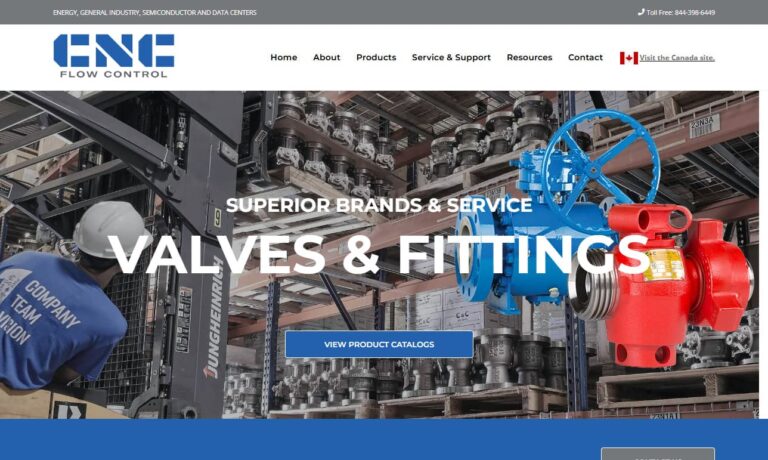
Offering a full line of flow control products, Plast-O-Matic Valves ensures high quality by testing each of our valve products individually before shipment. We offer plastic check valves, PVC check valves, relief valves, ball check valves and more. We are committed to engineering excellence.

More 3 Way Ball Valve Manufacturers

3 Way Ball Valves: Types, Applications, Benefits, and Buying Guide
3-way ball valves are essential components in fluid control systems, prized for their efficient shut-off capability and precise flow direction control all within a single, compact valve body. Their versatility, ease of use, and affordability make them a preferred solution across a broad spectrum of industrial, commercial, and residential piping systems. By rotating the handle, the ball inside the valve aligns its cut-outs (or flow channels) with the inlet and outlet ports, enabling various flow paths and operational modes.
Are you searching for the best 3-way ball valve for your application? Do you need to know which type of 3-way ball valve suits your system’s requirements? Explore the comprehensive guide below, covering L-port vs. T-port designs, typical use cases, critical features, and how to select a trusted supplier.
Types of 3-Way Ball Valves
Understanding the types of 3-way ball valves is crucial when specifying or replacing fluid control valves in industrial or commercial systems. The two main configurations—L-port and T-port—offer distinct flow patterns to match various operational demands.
L-Port Ball Valves (L-Pattern Diverter Valves)
The L-port ball valve, also known as an L-pattern or diverter valve, is designed to connect two independent inlet ports to a shared outlet. Its signature “L-shaped” bore inside the ball enables selective switching between two flow paths. By turning the handle or actuator 90°, the valve directs the media from one port to another, allowing precise control over which line is open or closed. In many process systems, this enables alternating supply or diversion without the need for two separate valves.

With an L-port ball valve, a further quarter-turn (total 180°) can block all fluid flow, providing shut-off capability. Some L-port valves allow up to a 270° turn, providing additional flexibility for flow isolation or redirection. The arrangement enables two of the three ports to be open at once, offering multiple flow combinations—such as isolating, mixing, or diverting fluids.
- Key applications: Alternating fluid sources, bypass lines, switching between tanks, and systems requiring periodic isolation.
- Popular materials: Stainless steel, brass, PVC, and carbon steel for chemical compatibility and durability.
T-Port Ball Valves (T-Pattern Mixer Valves)
T-port ball valves feature a T-shaped channel that allows them to combine two fluid sources into one outlet or distribute flow from one source to multiple destinations. The T-pattern design enables straight-through flow, mixing, or splitting, making it ideal for blending applications or distributing process fluids.

Unlike L-port valves, T-port ball valves cannot achieve a “bubble-tight” shut-off of all ports simultaneously; at least one port always remains open. T-port valves can be equipped with lockable handles or limit switches to restrict rotation to specific positions, ensuring precise control and preventing accidental misalignment in automated or safety-critical systems.
- Key applications: Mixing fluids, splitting flow between destinations, process sampling, and bypass operations in water treatment, chemical processing, and food & beverage production.
- Available actuations: Manual (lever handle), pneumatic, and electric actuators for integration in automated process control systems.
How Do 3-Way Ball Valves Work?
3-way ball valves utilize a bored-through ball with either an L-shaped or T-shaped channel. When the handle or actuator is rotated, the channel aligns with the valve’s three ports in varying patterns, allowing operators to:
- Direct flow from one source to two destinations (diverter function)
- Combine two fluid streams into a single outlet (mixing function)
- Completely shut off flow in certain configurations (L-port only)
- Switch between different media sources or process lines
Applications of 3-Way Ball Valves
3-way ball valves are widely used in diverse industries due to their adaptability, ease of automation, and robust construction. Below are some of the most common and high-value use cases:
- Industrial process control: Switching between process lines, blending fluids, diverting flows, and managing chemical dosing in manufacturing, petrochemical, and pharmaceutical facilities.
- Beverage and food processing: Mixing ingredients, controlling flow in bottling lines, and switching between cleaning and production fluids with sanitary-grade valves.
- Water treatment and distribution: Balancing and redirecting flow in filtration, pumping, and distribution systems, including bypass and sampling lines.
- HVAC systems: Controlling chilled or hot water flow between heating/cooling circuits or switching between primary and secondary loops.
- Energy and oil & gas: Managing transfer between tanks, blending fuels, or isolating sections of a pipeline.
- Laboratory and analytical: Sampling, mixing reagents, or isolating parts of a fluidic circuit in research or pilot plant setups.
- General plumbing and irrigation: Diverting water to multiple zones, combining supply lines, or enabling maintenance bypasses in commercial and residential installations.
Real-World Example Use Cases
- In a beverage production facility, a 3-way ball valve can combine purified water and juice concentrate streams before filling lines.
- For chemical processing plants, T-port valves are used to mix two reactants before entering a reactor or to switch between different waste streams.
- In HVAC systems, an L-port valve can alternate between heating and cooling circuits, optimizing energy consumption and system performance.
- In irrigation controls, a 3-way valve enables switching between mainlines or opening a bypass for maintenance without shutting down the entire system.
Benefits of 3-Way Ball Valves
Why choose a 3-way ball valve over other valve types like gate valves, globe valves, or butterfly valves? Here are the main advantages that make these valves an industry standard:
- Versatile flow control: With a single valve body, users can divert, mix, or isolate flow paths, reducing the need for multiple valves and fittings.
- Low flow resistance: The straight-through design ensures minimal pressure drop, crucial for efficient system performance.
- Compact and space-saving: A 3-way ball valve replaces two or more two-way valves, saving installation space and reducing system complexity.
- Broad material selection: Available in stainless steel, brass, PVC, and more, allowing compatibility with aggressive chemicals, potable water, slurries, and sanitary applications.
- High cycle life and reliability: Ball valves have fewer moving parts, reducing wear, maintenance requirements, and unplanned downtime.
- Quick actuation: 90-degree (quarter-turn) operation makes them ideal for manual or automated remote control, supporting fast shut-off or switching.
- Bubble-tight sealing: When properly specified, 3-way ball valves provide superior sealing for gas, liquid, or vacuum service.
- Easy maintenance: Many designs allow for inline servicing or simple seat/packing replacement, minimizing process interruptions.
- Wide range of sizes and pressure ratings: From fractional-inch laboratory valves to 48-inch industrial units, available for pressures from 150 PSI to 2,500 PSI or higher.
- Cost-effective solution: Reduces piping and installation costs by consolidating multiple functions into a single valve.
Typical Materials and Standards
3-way ball valves are manufactured according to international standards such as ANSI, DIN, and ISO. Common body materials include stainless steel (304, 316), brass, bronze, carbon steel, and plastics (PVC, CPVC, polypropylene). Seat and seal materials vary from PTFE (Teflon), Viton, EPDM, and reinforced composites, depending on temperature, pressure, and chemical compatibility.
How to Select the Right 3-Way Ball Valve for Your Application
Choosing the best 3-way ball valve involves assessing several decision factors to ensure reliable, long-term performance. Consider the following:
- Flow pattern: Determine whether an L-port (diverting/isolation) or T-port (mixing/splitting) is required.
- Valve size and pressure rating: Ensure the valve matches system flow rates and maximum operating pressure.
- Material compatibility: Select valve body, seat, and seal materials suitable for the process fluid, temperature, and environment.
- Actuation method: Decide between manual, pneumatic, or electric actuation for integration with existing control systems.
- Connection type: Options include threaded, flanged, butt-weld, or tri-clamp ends for ease of installation and maintenance.
- Certifications and approvals: For critical industries (food, pharma, potable water), verify compliance with FDA, NSF, or other relevant standards.
Need help choosing the correct valve? Ask these questions when specifying your 3-way ball valve:
- What is the primary function—mixing, diverting, or isolating flow?
- What media (liquid, gas, slurry) will the valve control?
- What are the minimum and maximum temperatures and pressures?
- Are there any corrosive or abrasive substances present?
- Is manual operation sufficient, or is remote/automated control needed?
- Do you need sanitary or hygienic design for food or pharmaceutical use?
Maintenance and Troubleshooting Tips for 3-Way Ball Valves
Proper maintenance extends the service life of your 3-way ball valve and preserves process integrity. Follow these best practices:
- Routine inspection: Check for leaks, corrosion, or unusual wear on the valve body and seals.
- Lubrication: Use compatible lubricants to ensure smooth operation of stem and seats.
- Seat and seal replacement: Replace worn or damaged seats and seals promptly to maintain shut-off capability.
- Actuator checks: For automated valves, regularly test the actuator and position feedback devices.
- Cleaning: In sanitary applications, follow industry-standard cleaning protocols (CIP/SIP) to prevent contamination.
Experiencing issues with your valve? Troubleshoot with these prompts:
- Is the handle difficult to turn or stuck?
- Are you observing leaks around the stem or ports?
- Is the valve not achieving the desired flow pattern?
- Do you require spare parts or technical documentation?
Frequently Asked Questions About 3-Way Ball Valves
- What’s the difference between an L-port and a T-port 3-way ball valve?
L-port valves divert flow between two outlets or provide shut-off, while T-port valves enable mixing or splitting of flow but cannot shut off all ports simultaneously. - Can 3-way ball valves be automated?
Yes, both L-port and T-port valves are available with pneumatic or electric actuators for integration with PLCs and remote control systems. - Are 3-way ball valves suitable for high-pressure or high-temperature applications?
Yes, when specified with the correct materials and pressure ratings, 3-way ball valves can handle demanding environments, including steam, oil & gas, and chemical service. - Can I use a 3-way ball valve for both liquids and gases?
Absolutely. Just ensure the valve’s materials and construction are compatible with the media in your system. - How do I determine the correct port orientation for my process?
Consult the valve’s manufacturer documentation or flow diagrams, and consider the piping layout and required flow paths.
Choosing the Correct 3-Way Ball Valve Supplier
To ensure you achieve the best results when purchasing 3-way ball valves from a reputable supplier, it’s essential to compare several manufacturers. Use our directory of leading 3-way ball valve companies to evaluate product offerings, technical capabilities, and support services. Each supplier profile provides detailed information on areas of expertise, product certifications, and contact forms for quote requests.
- Request multiple quotes: Use our RFQ form to contact several 3-way ball valve manufacturers with your specifications. This helps ensure competitive pricing and technical alignment.
- Review certifications: Verify that your supplier meets industry standards (API, ISO, CE, NSF, etc.) relevant to your application.
- Assess customer support: Consider suppliers with strong technical support, responsive customer service, and clear warranty policies.
- Preview company websites: Use our patented website previewer to quickly compare suppliers’ product ranges and capabilities before making a decision.
Not sure which supplier is right for you? Start your search by asking:
- Does the supplier offer valves in the materials and sizes I need?
- Are custom configurations or modifications available?
- What is the typical lead time for delivery?
- Does the supplier provide technical documentation and after-sales support?
- Are spare parts and maintenance kits readily available?
Ready to specify or purchase 3-way ball valves for your project? Contact our experts for application engineering, technical support, and competitive quotes tailored to your needs.











 Ball Valves
Ball Valves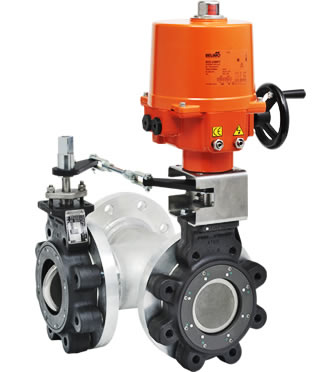 Butterfly Valves
Butterfly Valves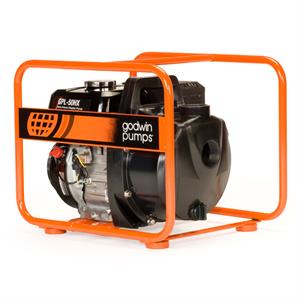 Centrifugal Pumps
Centrifugal Pumps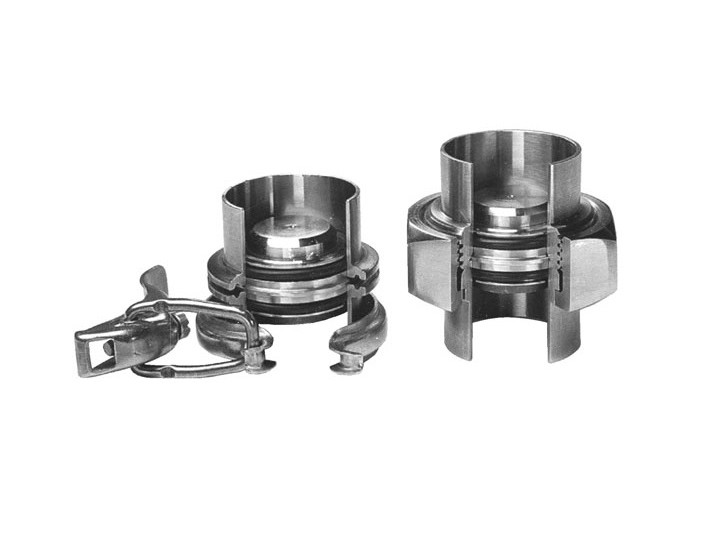 Check Valves
Check Valves Diaphragm Valves
Diaphragm Valves Flow Meters
Flow Meters Hydraulic Pumps
Hydraulic Pumps Hydraulic Valves
Hydraulic Valves Metering Pumps
Metering Pumps Solenoid Valves
Solenoid Valves Vacuum Pumps
Vacuum Pumps Castings & Forgings
Castings & Forgings Bulk Material Handling
Bulk Material Handling Electrical & Electronic Components
Electrical & Electronic Components Flow Instrumentation
Flow Instrumentation Hardware
Hardware Material Handling Equipment
Material Handling Equipment Metal Cutting Services
Metal Cutting Services Metal Forming Services
Metal Forming Services Metal Suppliers
Metal Suppliers Motion Control Products
Motion Control Products Plant & Facility Equipment
Plant & Facility Equipment Plant & Facility Supplies
Plant & Facility Supplies Plastic Molding Processes
Plastic Molding Processes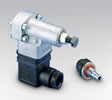 Pumps & Valves
Pumps & Valves Recycling Equipment
Recycling Equipment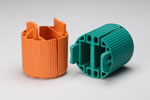 Rubber Products & Services
Rubber Products & Services